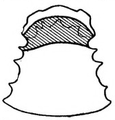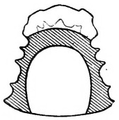
Back Lateraal Afrikaans Lateraler Konsonant ALS الحروف الساكنة Arabic Consonante llateral AST Lateral (Phonetik) BAR Странична съгласна Bulgarian Kostezenn (yezhoniezh) Breton Consonant lateral Catalan Laterální souhláska Czech Cytsain ochrol Welsh
This article needs additional citations for verification. (January 2021) |
A lateral is a consonant in which the airstream proceeds along one or both of the sides of the tongue, but it is blocked by the tongue from going through the middle of the mouth. An example of a lateral consonant is the English L, as in Larry. Lateral consonants contrast with central consonants, in which the airstream flows through the center of the mouth.
For the most common laterals, the tip of the tongue makes contact with the upper teeth (see dental consonant) or the upper gum (see alveolar consonant), but there are many other possible places for laterals to be made. The most common laterals are approximants and belong to the class of liquids, but lateral fricatives and affricates are also common in some parts of the world. Some languages, such as the Iwaidja and Ilgar languages of Australia, have lateral flaps, and others, such as the Xhosa and Zulu languages of Africa, have lateral clicks.
When pronouncing the labiodental fricatives [f] and [v], the lip blocks the airflow in the centre of the vocal tract, so the airstream proceeds along the sides instead. Nevertheless, they are not considered lateral consonants because the airflow never goes over the side of the tongue. No known language makes a distinction between lateral and non-lateral labiodentals. Plosives are never lateral, but they may have lateral release. Nasals are never lateral either, but some languages have lateral nasal clicks. For consonants articulated in the throat (laryngeals), the lateral distinction is not made by any language, although pharyngeal and epiglottal laterals are reportedly possible.[1]
- ^ Ladefoged & Maddieson (1996), p. 191.

